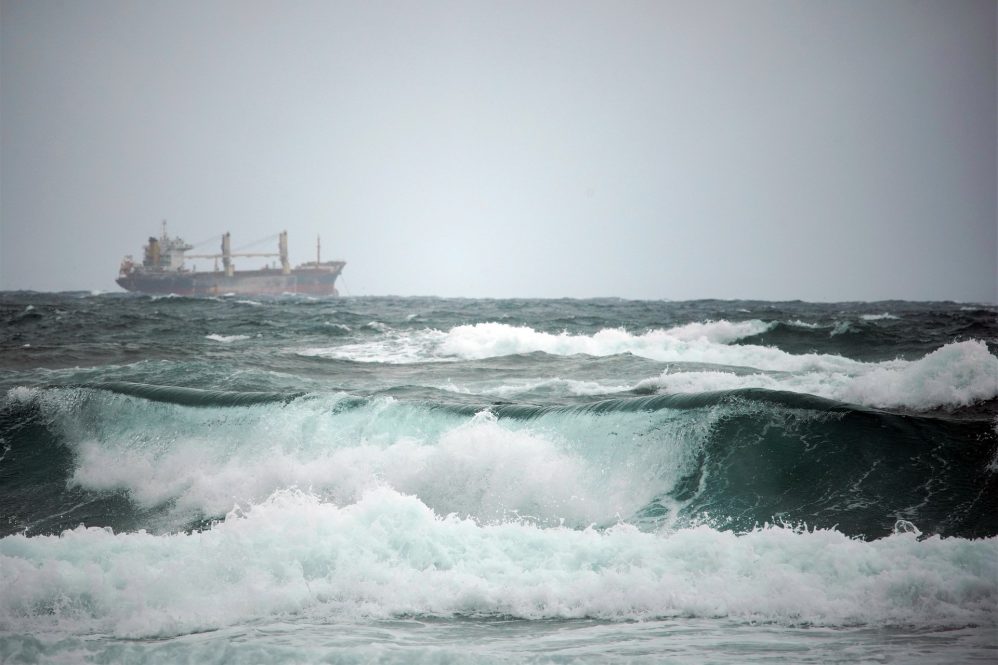A UConn-led research initiative will develop an ocean model to incorporate into the National Ocean and Atmospheric Administration’s (NOAA) 3D Real Time Mesoscale Analysis (3DRTMA) system.
Malaquias Peña Mendez, associate professor of civil and environmental engineering and offshore wind team leader at the Eversource Energy Center, will serve as the PI for this project. The total award for this three-year grant is $900,000.
Other researchers on this project are Leonel Romero and Cesar Rocha from the UConn Department of Marine Sciences; Stylianos Flampouris from Tomorrow.io, a private company that creates weather intelligence products; Enrique Curchitser from the Rutgers University Department of Marine and Coastal Sciences; and Manuel Pondeca from the Environmental Monitoring Center. Daryl Kleist, Jacob Carley, and Isidora Jankov are federal co-investigators from NOAA. Guillaume Vernieres, NOAA and Joint Effort for Data assimilation Integration (JEDI), is a collaborator on the project.
UConn will be the first university to work on this open-source software.
“If we could contribute to this highly operational model for the National Weather Service, I think this will be a good demonstration for other universities or academic institutions to play a role in the development of next-generation weather models,” Peña Mendez says. “This is a very challenging numerical analysis system, and I am proud that we are the first university to get involved in this ambitious project.”
The 3D-RTMA system is being designed to be the most accurate weather model for the continental U.S. The innovative system combines in situ observations, high-resolution satellite and radar observations with forecast models to generate an “analysis,” which is our best estimate of the state of the atmosphere at a given time. The system updates, generating an analysis product every 15 minutes, processing millions of data points each time, making it the gold standard that other weather models use to determine their own accuracy.
This is a very challenging system, and I am proud that we are the first university to get involved in this ambitious project. — Malaquias Peña Mendez
The system is three-dimensional because it comprises vertically stacked atmospheric layers that represent the vertical structure of the atmospheric circulation, physics, and dynamics.
Eight teams will work on this initiative to use the atmospheric component of 3D-RTMA system, which is still under development on the NOAA supercomputers, to build a suitable marine component that incorporates data on ocean surface winds, waves, and currents.
This advancement will supply tremendously valuable marine weather data for fishers, renewable energy engineers, and other stakeholders who work on the coast or ocean.
“The development of this marine model will provide valuable, accurate information about ocean conditions on a level never before seen for the U.S.,” Eversource Energy Center Director Emmanouil Anagnostou says. “The system will improve offshore wind forecasting skill at hub-height and across the turbine rotor plane for time scales ranging from half hour to days.”
Peña Mendez became interested in this research question while working on a project for renewable offshore wind energy for Connecticut. A major limitation of this work was the lack of reliable ocean models that could tell him how much energy potential there was in the area. These measurements are also important when there are storms that could damage wind turbines’ substructure.
“We wanted to have this type of analysis because that will help us to have a sense of the risk of extreme loads on substructures and also the energy resource potential not only in the New England’s offshore region, but all the waters around the U.S.,” Peña Mendez says.
A critical task of this research is to ensure that the atmospheric model is consistent with what is observed on the ocean. “Inconsistencies” are revealed, for instance, when a forecast model has extremely high winds and yet shows very little wave action. This indicates that the model may not be representing the air-sea flux exchange correctly.
Peña Mendez explains, “It’s essential for the variables at the air-sea interface of the 3DRTMA to be consistent with each other because it will validate, used as reference for, numerical prediction models. The accuracy of numerical weather forecasting a few hours ahead depends on how well the interaction between surface winds, waves, and currents matches observations. In the absence of observations, the analysis of the 3DRTMA is used. If the variables at the air-sea interface of a prediction model are inconsistent, for instance when it has incorrect surface friction parameter values, then the prediction model is bound to generate wrong surface wind forecasts.”
The team will transfer numerical technologies developed by the PI and co-PIs, including the use of machine learning methods to align observations of the three different fields using data from the Atlantic, Pacific, and Gulf Coasts.
Researchers in UConn’s Department of Marine Sciences will develop measures of performance for the consistency of the model’s three components. They will also implement software to process the observations to be used in the project, which includes developing data quality control procedures for new observations and performing sensitivity experiments to assess the impact of observations on the resulting 3DRTMA.
“This is something that is essential for the success of the project,” Peña Mendez says. “We have to monitor the performance of the analysis products. And for that we need to define the metrics, quantitative values, to determine if we’re [going] in the right direction or not.”
The researchers will create three versions of their new model: An alpha model to test the stability of the coupled wind-wave-current models during the time integrations, a “closed beta” version that will incorporate the proposed technologies. This version will only be available to the contributing researchers. Finally, an “open beta” version will be shared with the larger NOAA 3D-RTMA team.
“We can also start, in the future, digging more into temperature, salinity, dissolved oxygen content, chlorophyl concentration – all the coastal water variables we might be interested in,” Peña Mendez says. “We’re opening a new door.”
The Eversource Energy Center at the University of Connecticut is a partnership between New England’s largest energy provider and the School of Engineering; the College of Agriculture, Health and Natural Resources; and the School of Business, located in the Innovation Partnership Building at UConn Tech Park. The partnership, established in 2015, is dedicated to using cutting-edge research to solve real-world challenges where weather, security, and energy intersect.



